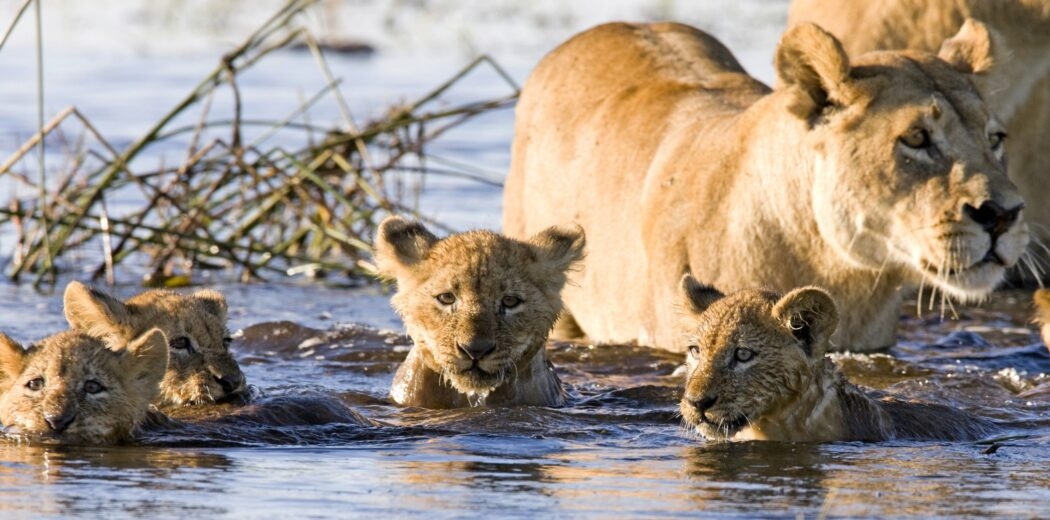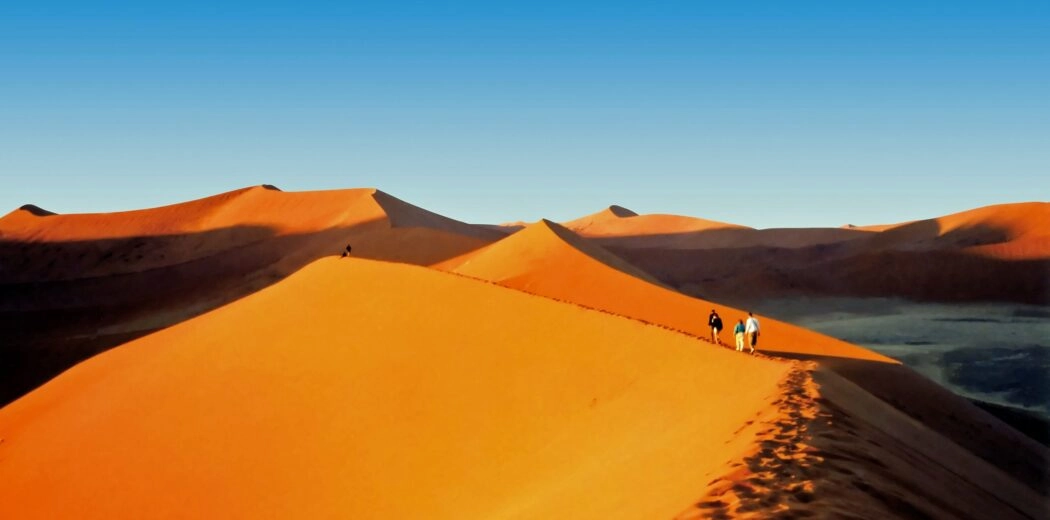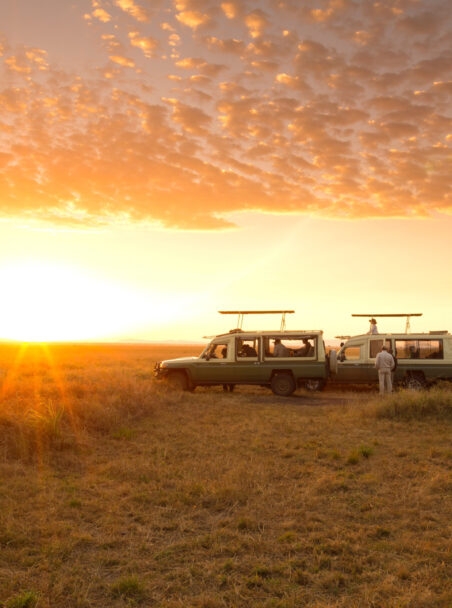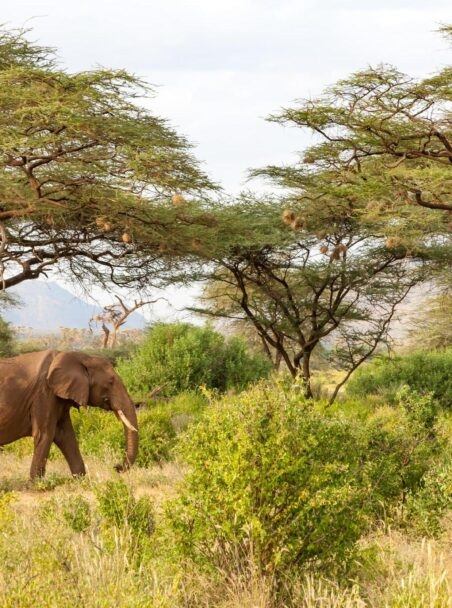Africa is home to more than 50 countries and over 300 national parks, each of which aims to preserve the remarkable landscapes and species within it. Ever since the continent’s first national park was established a century ago (Virunga National Park in 1925), a growing commitment to conservation has inspired the creation of more and more protected areas.
African national parks are incredibly diverse, ranging from dry deserts and vast savannahs to dense rainforests and mist-covered mountains. These parks are often at the heart of the trips we plan at Jacada – not just because of their beauty, but also due to the wildlife conservation, environmental stewardship and community empowerment programmes they support.
As we see it, the best national parks in Africa are those that combine majestic wildlife and magnificent natural wonders with unforgettable experiences and opportunities to make a positive impact. Here are a few of our favourites.

Kruger National Park, South Africa
Kruger National Park is one of Africa’s oldest wildlife reserves, with some areas under government protection since the late 1890s. It’s also among the largest and most beautiful national parks in the world and is certainly the most iconic reserve in South Africa.
It’s home to an immense variety of landscapes and species, including the Big Five, and over 500 species of birds. We suggest staying in one of the adjacent private reserves that form the Greater Kruger, such as Tanda Tula or Thornybush Game Lodge.
Need to know: The best time to visit the Kruger is during the dry winter season from May to October when the weather is cooler and sunnier. This is the best time for wildlife viewing, as animals are easier to spot thanks to thinner vegetation and scarcer water sources.

Okavango Delta, Botswana
Botswana’s Okavango Delta is nothing short of fascinating, both for its unique geographical characteristics and the overwhelming array of animals it attracts. Every year this enormous wetland is inundated by rising rivers, and the result is a thriving seasonal ecosystem that draws everything from elephants and buffalo to hundreds of bird species. Visits to the Okavango Delta often involve mokoro (traditional canoe) trips, walking safaris and even hot air balloon rides.
Need to know: Perhaps counterintuitively, the delta floods during the dry season from June to September. This is the best time for wildlife viewing in general, though November to April is ideal for birdwatching. Check out our ultimate guide to the Okavango Delta for more details.

Volcanoes National Park, Rwanda
In Africa, national parks are often associated with savannahs and baobab trees – but Volcanoes National Park shows a different side of the continent’s natural splendour. Located in northwestern Rwanda, this park is best known for its population of endangered mountain gorillas. It’s a land of sloping hills, misty peaks, rich rainforests, swamps and marshes. Beyond gorilla trekking, you can also see golden monkeys, spotted hyenas and many other species.
Need to know: If you want to see mountain gorillas, the best time to visit Rwanda is during the months with the least rain. The main dry season is from June to September, but there’s also a shorter dry period from mid-December to early February.

Kilimanjaro National Park, Tanzania
Not far from the vibrant city of Arusha on Tanzania’s northern edge, you’ll find the highest peak in all of Africa (and the tallest freestanding mountain on earth): Mount Kilimanjaro. Its snow-capped summit looms over the surrounding landscape and its forested slopes are protected by Kilimanjaro National Park.
We can organise an exciting yet accessible Kilimanjaro climb, which you can easily combine with visits to the North Serengeti and Ngorongoro Crater. As well as the Big Five, the latter is home to vibrant flamingoes and even elusive leopards.
Need to know: Mount Kilimanjaro is at its best from July to October, although it can be a bit cold. This is also the optimal time to combine it with a Tanzanian safari. Less experienced climbers might prefer January to March, when the weather is slightly warmer.

Serengeti National Park, Tanzania
This East African country is among the most celebrated safari destinations on earth, and for good reason. There are nearly two dozen national parks in Tanzania, but the most famous of all has to be Serengeti National Park. Its main attraction is the Great Migration: a natural spectacle that involves millions of wildebeests, zebras and gazelles. There are plenty of other animals to see here as well, including the Big Five, giraffes, cheetahs and Nile crocodiles.
Need to know: To witness the dramatic river crossings of the Great Migration, the best time to visit Tanzania is July to September. The dry season from June to October brings ideal conditions for safaris, while January to March is calving season for wildebeests in the Serengeti.

Maasai Mara National Reserve, Kenya
Set right on the border of Kenya and Tanzania, Maasai Mara National Reserve is one of the most iconic national parks in East Africa. Part of the Great Migration takes place here every year when the migrating herds cross the Mara River (which divides the two countries) in search of greener pastures. Like the Serengeti, this reserve also hosts the Big Five and many other species including hippos, zebras, giraffes and smaller animals like aardvarks and mongooses.
Need to know: The Great Migration moves from the Serengeti to the Maasai Mara between June and October, with most river crossings occurring from July to September. In late October and early November the herds cross the river again to return to Tanzania.

Chobe National Park, Botswana
Above all, Chobe National Park is known for its elephants. It’s estimated that around 120,000 Kalahari elephants reside here, forming the highest concentration of the species anywhere in Africa. A safari in Chobe is also likely to include sightings of buffalo, lions, hyenas and more. Stay at Savute Elephant Lodge for a wildlife-focused luxury getaway, or the mobile Chobe Under Canvas to get as close to the animals as possible (while always respecting their space).
Need to know: Botswana’s dry season from May to October is the best time to see big game like elephants as the Chobe River attracts animals in search of water. We highly suggest combining Chobe with a trip to Victoria Falls, which is just over an hour’s drive away.

Etosha National Park, Namibia
Etosha National Park is a land of shimmering mirages and salt pans in northern Namibia, where the terrain itself is arguably just as impressive as the animals that inhabit it. In addition to the Etosha Pan, you’ll also find wooded areas and wide-open plains populated by black rhinos, springbok, zebras and over 100 other mammal species. We recommend staying in a private reserve beside the park; the lodges and camps of Ongava and Onguma are fantastic options.
Need to know: Etosha offers the best wildlife viewing during the dry season from May to October, though if you’re interested in birdwatching you might prefer the wet season from January to March.

Bwindi Impenetrable National Park, Uganda
Right at the southern tip of Uganda, around 80 kilometres (50 miles) north of Volcanoes National Park, you’ll find another haven of the magnificent mountain gorilla: Bwindi Impenetrable Forest. There are more than 400 gorillas living within the national park, which was established specifically to protect them. It’s a place of extreme biodiversity, boasting hundreds of other animal and plant species (including several unique primates), and can only be explored on foot.
Need to know: Due to its dense foliage, Bwindi is sometimes referred to as ‘the place of darkness’ – which also aligns with the origin of its name in the Runyakitara language. The best time to visit is during one of two dry seasons: June to September or December to February.

Hwange National Park, Zimbabwe
Hwange National Park is a quintessential safari destination and the largest of all the national parks in Zimbabwe. It’s about the same size as Serengeti National Park and home to more than 100 species of mammals, including thousands of elephants and buffalo. The park is especially well known for its unusually large population of the endangered African wild dog; you can learn about efforts to protect this species at the Painted Dog Conservation Centre.
Need to know: The best time to go on safari in Zimbabwe is generally July to October. Hwange offers especially good conditions for walking safaris in July and August, while October is ideal for elephant sightings.

Namib-Naukluft National Park, Namibia
Namib-Naukluft National Park is the biggest national park in Africa, covering almost 50,000 square kilometres (20,000 square miles) of western Namibia. Its most famous section is the sea of red sand dunes that form Sossusvlei, but the park also features soaring mountains, rocky kopjes and a significant portion of the ancient Namib Desert. Its diverse habitats support a wide array of wildlife, from giraffes and jackals to the native Hartmann’s mountain zebra.
Need to know: Winter (July to November) is the best time to visit Namibia to go on safari and see the otherworldly vistas of Sossusvlei. In addition to pleasantly cool temperatures, these months promise clear skies and some of the world’s best stargazing.
Whatever you want from your adventure in Africa, our travel designers are ready to help:












